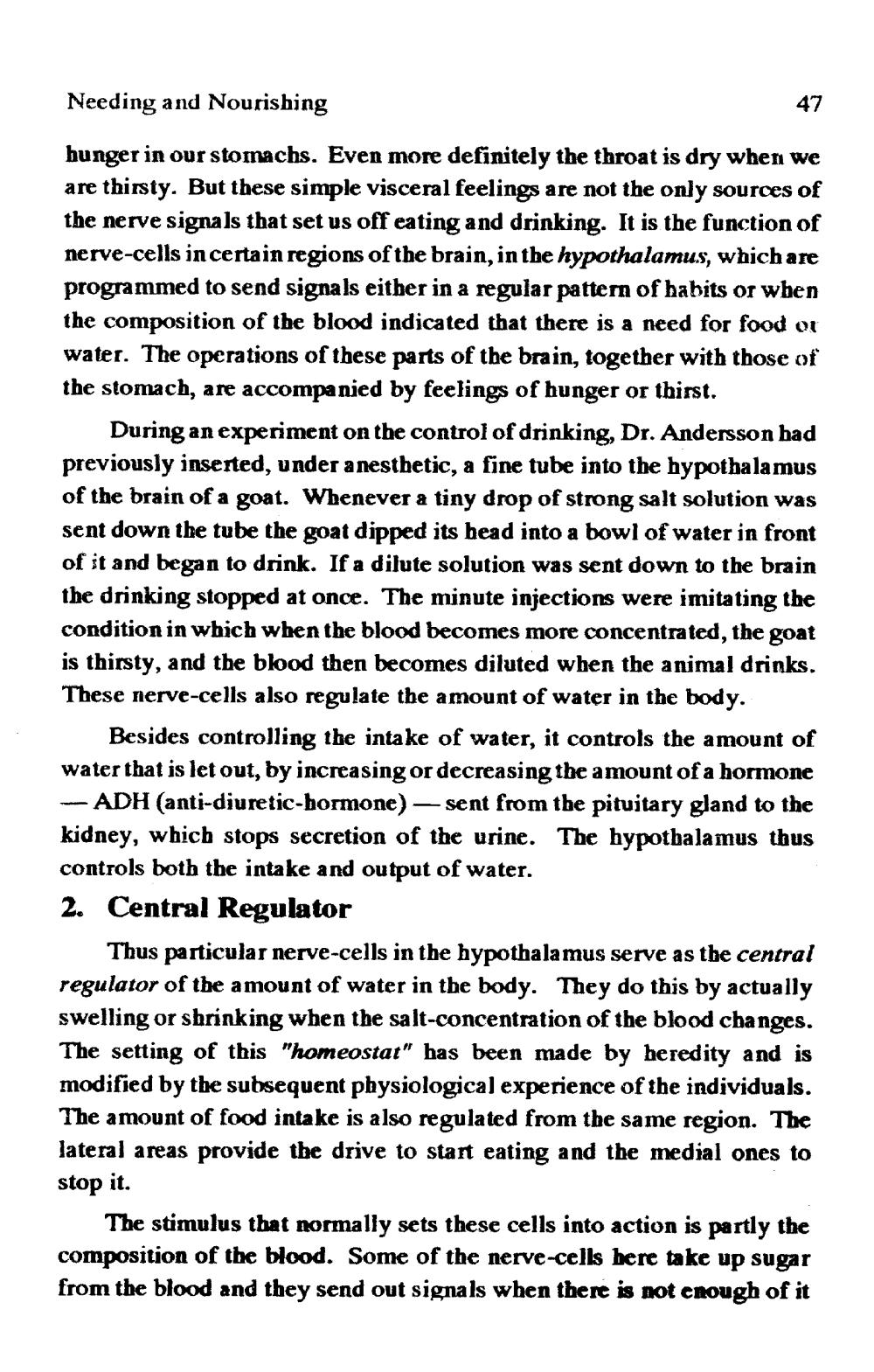________________
Needing and Nourishing
hunger in our stomachs. Even more definitely the throat is dry when we are thirsty. But these simple visceral feelings are not the only sources of the nerve signals that set us off eating and drinking. It is the function of nerve-cells in certain regions of the brain, in the hypothalamus, which are programmed to send signals either in a regular pattern of habits or when the composition of the blood indicated that there is a need for food or water. The operations of these parts of the brain, together with those of the stomach, are accompanied by feelings of hunger or thirst.
During an experiment on the control of drinking, Dr. Andersson bad previously inserted, under anesthetic, a fine tube into the hypothalamus of the brain of a goat. Whenever a tiny drop of strong salt solution was sent down the tube the goat dipped its head into a bowl of water in front of it and began to drink. If a dilute solution was sent down to the brain the drinking stopped at once. The minute injections were imitating the condition in which when the blood becomes more concentrated, the goat is thirsty, and the blood then becomes diluted when the animal drinks. These nerve-cells also regulate the amount of water in the body.
Besides controlling the intake of water, it controls the amount of water that is let out, by increasing or decreasing the amount of a hormone - ADH (anti-diuretic-hormone) — sent from the pituitary gland to the kidney, which stops secretion of the urine. The hypotbalamus thus controls both the intake and output of water. 2. Central Regulator
Thus particular nerve-cells in the hypothalamus serve as the central regulator of the amount of water in the body. They do this by actually swelling or shrinking when the salt-concentration of the blood changes. The setting of this "homeostat" has been made by heredity and is modified by the subsequent physiological experience of the individuals. The amount of food intake is also regulated from the same region. The lateral areas provide the drive to start eating and the medial ones to stop it.
The stimulus that normally sets these cells into action is partly the composition of the blood. Some of the nerve-cells here take up sugar from the blood and they send out signals when there is not enough of it




